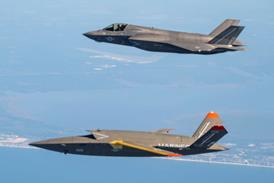US regulator the Federal Aviation Administration (FAA) will take no immediate action to address a smoke-related issue involving the CFM International Leap-1B engines that power the Boeing 737 Max.
The concern involves a Leap system called the “load reduction device” (LRD) that is intended to activate in response to severe engine damage and that can cause smoke to fill either the jet’s cabin or cockpit.
Two Southwest Airlines 737 Max suffered such incidents in 2023 after striking birds shortly after take-off.
An FAA safety panel issued a report on 28 October recommending that the FAA address the concern, requiring that pilots follow different take-off procedures. It also recommended a design change intended to close a valve more quickly after a Leap-1B suffers a bird strike or loses a fan blade.

The FAA now says it does not intend to immediately act on those recommendations.
On 26 November, the agency convened a “Corrective Action Review Board” to evaluate the LRD-smoke issue and to consider “several internal FAA safety recommendations”.
“Based on the available data, the [board] determined the issue does not warrant immediate action and the FAA will follow its standard rulemaking process to address it,” the agency says.
The FAA also plans to “issue a Continued Airworthiness Notification to the international community about new information Boeing provided to operators of aircraft with Leap-1B engines. The new information contains enhanced instructions that direct flightcrews more quickly to the appropriate actions when they experience abnormal engine indications”.
Boeing in February had addressed the concern in an Operations Manual Bulletin sent to 737 Max operators.
“We are working with the authorities that are investigating these incidents. We continue to follow regulatory processes to properly address potential issues and ensure the continued safety of the global fleet,” Boeing says.
CFM has said that LRDs are “proven” technologies used for more than two decades and that Leaps meet bird-ingestion regulatory requirements. The engine maker is working with regulators and Boeing “to determine if there are any learnings from recent events”, it has said.
Also in February, 737 Max operators American Airlines and Southwest Airlines notified pilots of the LRD-smoke issue. In that guidance, the airlines told pilots to consider such an event an instance of “severe engine damage”, and instructed them to respond by completing three checklists, including one that calls for shutting down the engine.
Some pilots are unhappy with the FAA’s decision. Dennis Tajer of the Allied Pilots Association, which represents American Airlines’ crews, notes that he and his colleagues were not even aware of the existence of the LRD system before this year.
He questions whether the FAA’s forthcoming “enhanced instructions” will be sufficient, and says the current guidance of following three checklists is not.
Tajer says an engine needs to be shut down immediately after an LRD activation to prevent smoke from entering the cabin. But the checklists must be completed methodically, meaning the engine cannot be safely shut off before smoke becomes a problem.
“The enhanced procedures better [include] some way to protect passengers other than running three separate checklists in seconds,” Tajer says.
In its 28 October report, the FAA safety panel – convened by the agency’s Office of Accident Investigation & Prevention – called the LRD-smoke problem an “immediate safety” concern.
The report says smoke in the cockpit could prevent pilots seeing and cause distraction during a critical phase of flight, possibly “ultimately leading to a loss of control”.
“It is not rational to expect flightcrew to be able to don oxygen masks and smoke goggles during a critical phase of flight such as rotation and lift-off,” the report says.
It also warns of exposing passengers and crew to smoke containing possibly “lethal levels of aerosolised acrolein and formaldehyde”.
The report recommends a software change that would close a bleed-air system valve faster than currently designed. In the meantime, it recommends that pilots take-off with at least the 737 Max’s left-side bleed air system disabled.
The report notes that Boeing estimates a 737 Max will suffer an LRD activation roughly once yearly.


























